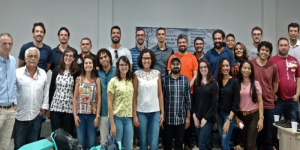5 to 7 November 2018 / Maceió, Brazil
More than 35 young participants of north-eastern Brazil took part in this seminar, based on a double dynamic formula.
The first day consisted of presentations by five experts, each followed by discussions on the participants experiences about drought monitoring, risk assessment, and how to transmit this awareness to society.
The following two days were for hands-on training on extracting risk estimates from satellite imagery, in particular vegetation indices; precipitation data, and land surface temperatures. Working in both groups and individually, the results focused on data interpretation, and were fully discussed by trainees and trainers.
LAPIS, a laboratory for image analysis in UFAL led by Dr Humberto Barbosa, ran the organisation and delivery of the event, which attracted media coverage. Since 2012, drought has been an acute problem in the region, which has been recently aggravated, with a forecast for critical conditions early in 2019.
The rainy season in the region covers the months from April to July, although this year it was February and March. Learning to live together with adverse climatic circumstances is the objective of the new local policies and scientific investment.

